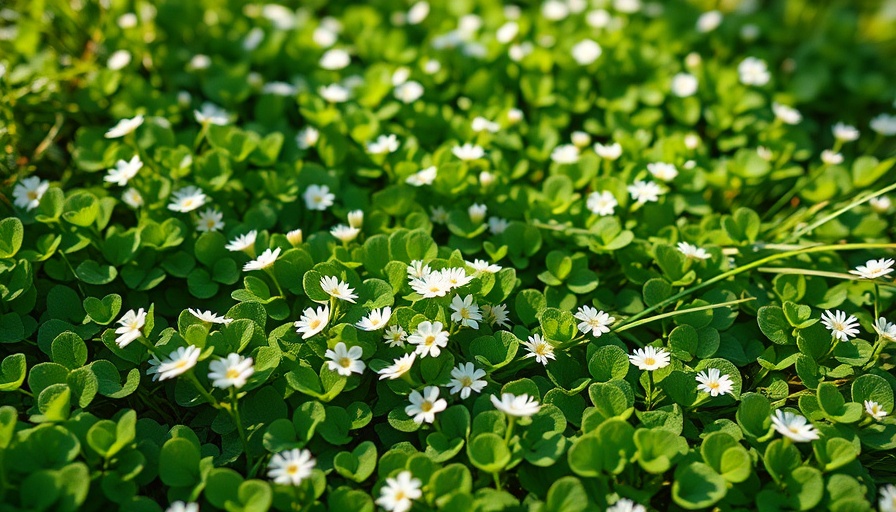
Discover the Benefits of a Clover Lawn
If you've ever felt overwhelmed by the upkeep of a traditional grass lawn, a clover lawn might just be your ideal solution. These low-maintenance lawns are a sustainable alternative that not only require less water and fertilizer but also support local ecosystems by attracting pollinators. Particularly beneficial for DIY gardeners and homeowners, clover lawns can be established with minimal fuss.
Choosing the Right Clover Varieties
The initial step in creating your vibrant clover lawn is selecting the right species. Free-spreading varieties such as white and red clover are excellent options, particularly for their drought tolerance and low growth habits. It’s essential to choose native species over invasive ones, which can disrupt local biodiversity. By picking species that thrive in your specific region, you ensure your clover lawn will flourish while maintaining ecological integrity.
Transforming Your Existing Lawn
Many homeowners are keen to convert their high-maintenance lawns into flourishing clover patches. Start by removing existing grass and weeds from the area. This critical step ensures that young clover seedlings can access sunlight and nutrients without competition. Techniques such as smothering the grass with cardboard or landscape fabric can be effective here, as they block sunlight without disrupting soil health.
Planting Your Clover Seeds: A Step-by-Step Guide
After prepping your lawn, it’s time to plant! Scatter your clover seeds evenly across the prepared soil, and consider lightly raking them in to ensure good soil contact. Keep the area lightly moistened but not saturated. It's beneficial to plant during favorable seasons—spring or early fall is recommended—to help the seeds germinate faster.
Maintaining Your Clover Lawn: Expectations vs. Reality
Once your clover lawn establishes, maintenance is straightforward compared to traditional grass lawns. Mowing can be reduced significantly, which allows blooms to attract pollinators during their peak seasons. Plus, clovers naturally enrich the soil by fixing nitrogen, which can diminish the need for artificial fertilizers. Embracing this simpler maintenance strategy not only saves time but also promotes sustainability in your outdoor space.
Explore Local Alternatives and Resources in Muskegon
If you're based in Muskegon and are inspired to start your clover lawn journey, consider incorporating various DIY projects, such as building elevated planter boxes or constructing outdoor soil beds, to enhance your gardening experience. Resources like local gardening centers or community workshops can provide invaluable insights and supplies. You can even find creative ways to plan your backyard layout, ensuring a cohesive and inviting outdoor space.
Expert Tips for Success
Besides proper species selection and installation, consider integrating features like automated watering systems or buildable composting barrels to further enhance your growing efforts. These aspects not only contribute to efficiency but also create an ecosystem beneficial for your garden. Engage local gardening groups or social media communities for additional support and inspiration as you cultivate your green haven!
 Add Row
Add Row 
 Add
Add 


Write A Comment